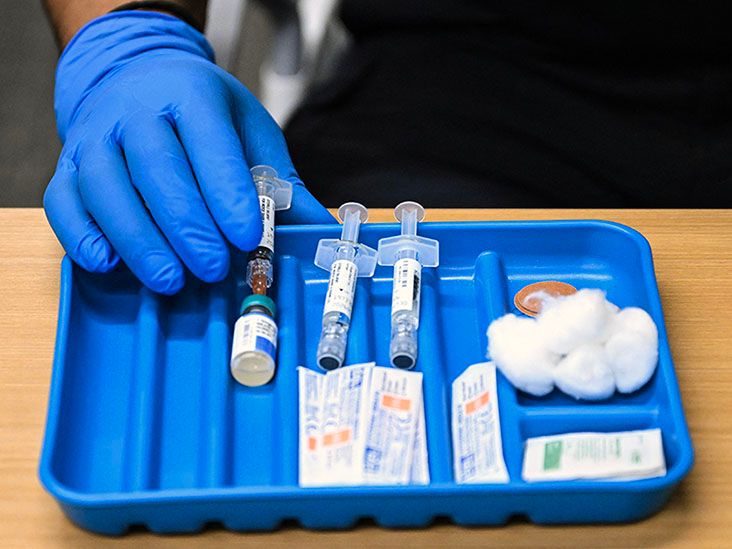Nerve pain refers to painful sensations around the nerves. Various treatment options are available, including anticonvulsants, certain antidepressants, mild opioids, and some topical treatments.
Scientists define nerve pain, also known as neuropathic pain or neuropathy, as any condition in which an individual has sustained damage to their nerves.

The typical symptoms of neuropathy include:
- pain near any affected nerves
- weakness
- numbness
- burning or pricking sensations
A wide range of underlying conditions can cause this type of pain.
Learn more about the types and causes of nerve pain.
Anticonvulsants are first-line medications that help manage the symptoms of seizure disorders, such as epilepsy.
As a
Although they are effective, these medications can cause adverse effects.
A 2021 review lists the following possible side effects of both gabapentin and pregabalin:
- drowsiness
- dizziness
- fatigue
A person should consult a doctor if they notice these symptoms after taking anticonvulsants.
Learn more about anticonvulsants.
Antidepressants are a first-line treatment for neuropathic pain. The
However, these medications can also produce side effects.
Amitriptyline
Amitriptyline is a TCA that can help people manage nerve pain. However, it can lead to a host of unwanted effects, including:
- constipation
- dizziness
- dry mouth
- feeling sleepy, tired, or weak
- urinary retention
- headaches
In rare cases, some people may have serious side effects after taking amitriptyline. These may include:
- abnormal heart rhythms
- the whites of eyes turning yellow
- long-lasting confusion or weakness
- frequent muscle cramps
- eye pain, a change in eyesight, or swelling in or around the eye
Duloxetine and venlafaxine
Examples of SNRIs include duloxetine (Cymbalta) and venlafaxine (Effexor), which can help treat neuropathic pain.
However, these drugs can result in side effects.
Duloxetine can cause:
- constipation
- dry mouth
- difficulties with:
- balance
- walking
- speaking
- swallowing
The possible side effects of venlafaxine include:
- vertigo
- lethargy
- high blood pressure
- excessive sweating
People should speak with a doctor if they are experiencing side effects that are affecting their quality of life.
Learn more about antidepressants.
Experts consider certain opioids to be a second-line treatment option. A
Tramadol (Ultram) is an opioid that can help with neuropathic pain. However, there is evidence that it can cause side effects, some of which are serious. These include:
- nausea and vomiting
- constipation
- lethargy
- seizures
Doctors are less keen to prescribe more potent opioids for neuropathic pain. Stronger opioids for neuropathy include morphine and oxycodone, which cause similar side effects as those above.
Morphine can also lead to dizziness, while oxycodone might induce breathing difficulties. There is also a risk of tolerance, dependence, or misuse, potentially leading to opioid use disorder.
A person should seek immediate medical attention if these drugs are affecting their breathing or causing severe side effects. It is also essential to follow the prescription carefully.
Topical treatments are creams, ointments, or patches that individuals can apply to their skin. The active components of these products should travel through the skin and into the body, where they will affect the nerves.
The options include lidocaine — a type of local anesthesia — and capsaicin patches.
Lidocaine causes pain relief by
Learn about the best capsaicin creams.
In some cases of neuropathic pain, doctors may recommend that an individual take multiple medications at once. However, the evidence for the effectiveness of combined therapy remains inconclusive.
A 2021 study suggests that certain drug combinations might be useful. For instance, taking an anticonvulsant, such as gabapentin or pregabalin, alongside a TCA antidepressant could be more effective than taking either type of drug alone.
Combining different drugs sometimes provides improved pain relief and tolerability.
However, sufficient evidence has not yet emerged to confirm that combination therapy is more effective than monotherapies.
Despite medical advances, pharmacological treatments for neuropathic pain may only be effective in less than 50% of cases. Therefore, many people seek alternative sources of treatment for this condition.
There is a limit to the evidence that non-pharmaceuticals are helpful in this regard.
However, a 2022 overview suggests that spinal cord stimulation (SCS) therapy could relieve nerve pain in cases where pharmaceutical treatments have proven ineffective. SCS therapy involves stimulating a person’s spinal cord with electrical impulses. Doctors achieve this by inserting small electrodes into the spine, using either surgery or an epidural needle.
Doctors may prescribe various medical treatments for nerve pain, including antidepressants, anticonvulsants, opioids, and topical medications.
In some cases, they may recommend multiple treatments at once. However, the existing research has not determined whether it is more effective than a single treatment.


